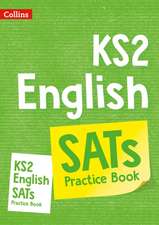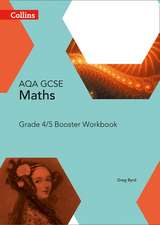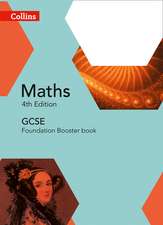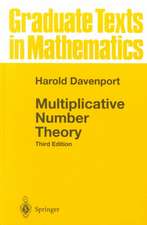Mathematical Theory of Elastic Equilibrium: Recent Results: Ergebnisse der angewandten Mathematik, cartea 7
Autor Giuseppe Griolien Limba Engleză Paperback – 1962
Din seria Ergebnisse der angewandten Mathematik
-
 Preț: 452.25 lei
Preț: 452.25 lei -
 Preț: 412.13 lei
Preț: 412.13 lei - 15%
 Preț: 435.77 lei
Preț: 435.77 lei -
 Preț: 411.75 lei
Preț: 411.75 lei -
 Preț: 348.77 lei
Preț: 348.77 lei -
 Preț: 385.62 lei
Preț: 385.62 lei -
 Preț: 386.22 lei
Preț: 386.22 lei
Preț: 381.43 lei
Nou
Puncte Express: 572
Preț estimativ în valută:
72.99€ • 76.40$ • 60.75£
72.99€ • 76.40$ • 60.75£
Carte tipărită la comandă
Livrare economică 01-15 aprilie
Preluare comenzi: 021 569.72.76
Specificații
ISBN-13: 9783540028048
ISBN-10: 3540028048
Pagini: 180
Ilustrații: VIII, 168 p.
Dimensiuni: 155 x 235 x 9 mm
Greutate: 0.26 kg
Ediția:Softcover reprint of the original 1st ed. 1962
Editura: Springer Berlin, Heidelberg
Colecția Springer
Seria Ergebnisse der angewandten Mathematik
Locul publicării:Berlin, Heidelberg, Germany
ISBN-10: 3540028048
Pagini: 180
Ilustrații: VIII, 168 p.
Dimensiuni: 155 x 235 x 9 mm
Greutate: 0.26 kg
Ediția:Softcover reprint of the original 1st ed. 1962
Editura: Springer Berlin, Heidelberg
Colecția Springer
Seria Ergebnisse der angewandten Mathematik
Locul publicării:Berlin, Heidelberg, Germany
Public țintă
ResearchCuprins
I—Kinematic Introduction.- § 1. Preliminaries.- § 2. Fundamental quantities describing the deformation.- § 3. A minimum theorem in the kinematics of large deformations.- II—Basic Equations of the Statics of Continuous Media.- § 1. Eulerian expressions of fundamental equations.- § 2. Lagrangean expressions of fundamental equations.- § 3. Thermodynamic potential.- III—Isotropic Bodies — Thermodynamic Potential.- § 1. Isotropic bodies.- § 2. Principal properties of the thermodynamic potential.- § 3. A property of the thermodynamic potential.- § 4. Elasticity of second grade. Signorini’s thermodynamic potential.- § 5. On the most general elasticity of second grade.- § 6. A new type of thermodynamic potential proposed by Tolotti.- §7. A type of thermodynamic potential proposed by Bordoni.- IV—Transformations Depending on a Parameter. Successive Equations of Elasticity.- § 1. Displacements depending on a parameter.- § 2. Successive systems. Linear elasticity.- § 3. Necessary conditions for the existence of solutions of the successive systems of equations.- § 4. On the conditions of compatibility of the successive systems of equations when constraints are present.- § 5. An example of a solution of order one.- § 6. Successive systems of equations forXrs.- §7. The second-order theory of Rivlin.- V—Analytical Problems Regarding the Fundamental Equations of Isothermal Static Elasticity.- § 1. Preliminaries.- § 2. Fundamental hypotheses. Statement of the theorems of existence and uniqueness in the case of a principal orientation of infinite order.- § 3. Demonstration of Theorem A).- § 4. On the expansion of the solution of the basic set of equations in a power series in ? when there is no axis of equilibrium.- § 5. On the existence of solutions and the possibility of expanding them in power series in ? when there is an axis of equilibrium.- § 6. Theorems of existence and uniqueness for the linear equations of isothermal static elasticity.- VI—Inequalities for the Equilibrium ofSlightly Deformable Elastic Bodies.- § 1. Preliminaries.- § 2. Integral properties.- § 3. A basic inequality.- § 4. A few consequences of inequality (6.16).- § 5. A new general inequality.- § 6. Application of (6.28) to the equilibrium of cylindrical bodies.- § 7. On the best at in a case similar to that of uniform bending.- § 8. Rectangular prism. A geometrical interpretation of the results.- § 9. Inequalities concerning the equilibrium of an arc.- § 10. Inequalities regarding the deformation of slightly deformable bodies.- § 11. On the deformation of a homogeneous elastic shell under pressure.- § 12. New inequalities regarding the displacements.- § 13. On the variation of temperature in an adiabatic transformation.- § 14. Upper bounds for displacements and stresses.- § 15. Other upper bounds for the stresses.- VII—Integration of the Fundamental Problem of Static Elasticity.- § 1. Preliminaries.- § 2. Analytical preface to the integration of the static elasticity problem.- § 3. Polynomial approximations of stress components.- § 4. Integration method.- § 5. Validity of Menabrea’s theorem in non-isothermal cases.- § 6. Adaptation of the integration method of § 4 to non-isothermal cases.- § 7. On the integration of the basic problem of isothermal elastic statics in the case of finite deformation.- § 8. Integration method of M. Picone.- § 9. On integration of the static problem of the homogeneous plate of arbitrary thickness.- § 10. Saint-Venant’s problem.- VIII—Plane Elasticity.- § 1. Preliminaries.- § 2. Structure of Airy’s stress function in the problem of plane deformations.- § 3. Meaning of the coefficients of the singular part of Airy’s function in the case of plane deformations.- § 4. Structure of Airy’s function in the problem of plane stress independent of y3.- § 5. Structure of Airy’s function in the problem of plane stress depending on y3.- IX—Hypo-Elasticity.- § 1. Preliminaries.- § 2. Basic equations of hypo-elasticity.- § 3. Hypo-elastic equilibrium.- §4. Lagrangean form of the equations of hypo-elasticity.- § 5. On the solution of the equations of hypo-elasticity in the static case for the body of grade zero.- § 6. Some considerations concerning the solution of the general problem of hypo-elastic statics.- X—Asymmetric Elasticity.- § 1. Preliminaries.- § 2. Basic Eulerian equations.- § 3. Basic Lagrangean equations.- § 4. Use of the thermodynamic potential.- § 5. Equilibrium equations in the linear theory.- § 6. Isothermal elastic potential for the small deformations of isotropic bodies.- § 7. Recapitulation of the general equations valid in the case of infinitesimal isothermal transformations.- § 8. Discussion of an example.- Index of Authors.














